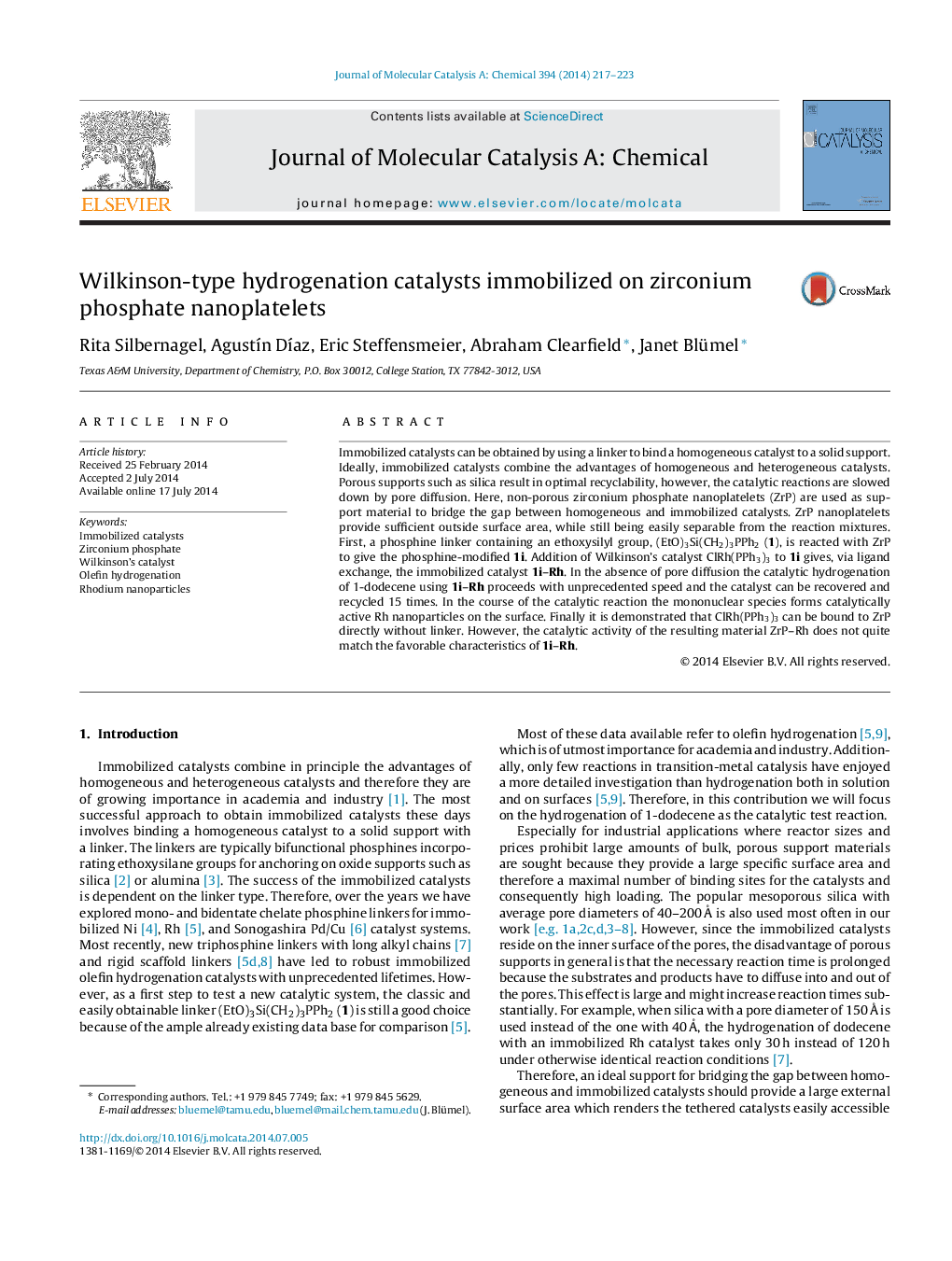| کد مقاله | کد نشریه | سال انتشار | مقاله انگلیسی | نسخه تمام متن |
|---|---|---|---|---|
| 65429 | 48390 | 2014 | 7 صفحه PDF | دانلود رایگان |

• Zirconium phosphate nanoplatelets function as a non-porous support for immobilized catalysts.
• Wilkinson-type hydrogenation catalysts can be immobilized on the nanoplatelets.
• The substrates can reach the catalyst without delay by diffusion.
• The immobilized catalyst is the most active known so far.
• The catalyst bound to zirconium phosphate nanoplatelets can be recycled 15 times.
Immobilized catalysts can be obtained by using a linker to bind a homogeneous catalyst to a solid support. Ideally, immobilized catalysts combine the advantages of homogeneous and heterogeneous catalysts. Porous supports such as silica result in optimal recyclability, however, the catalytic reactions are slowed down by pore diffusion. Here, non-porous zirconium phosphate nanoplatelets (ZrP) are used as support material to bridge the gap between homogeneous and immobilized catalysts. ZrP nanoplatelets provide sufficient outside surface area, while still being easily separable from the reaction mixtures. First, a phosphine linker containing an ethoxysilyl group, (EtO)3Si(CH2)3PPh2 (1), is reacted with ZrP to give the phosphine-modified 1i. Addition of Wilkinson's catalyst ClRh(PPh3)3 to 1i gives, via ligand exchange, the immobilized catalyst 1i–Rh. In the absence of pore diffusion the catalytic hydrogenation of 1-dodecene using 1i–Rh proceeds with unprecedented speed and the catalyst can be recovered and recycled 15 times. In the course of the catalytic reaction the mononuclear species forms catalytically active Rh nanoparticles on the surface. Finally it is demonstrated that ClRh(PPh3)3 can be bound to ZrP directly without linker. However, the catalytic activity of the resulting material ZrP–Rh does not quite match the favorable characteristics of 1i–Rh.
A Wilkinson-type catalyst can be immobilized on phosphine-modified zirconium phosphate nanoplatelets to give 1i–Rh, which can be recycled 15 times in a batchwise manner when hydrogenating 1-dodecene.Figure optionsDownload high-quality image (100 K)Download as PowerPoint slide
Journal: Journal of Molecular Catalysis A: Chemical - Volume 394, 15 November 2014, Pages 217–223